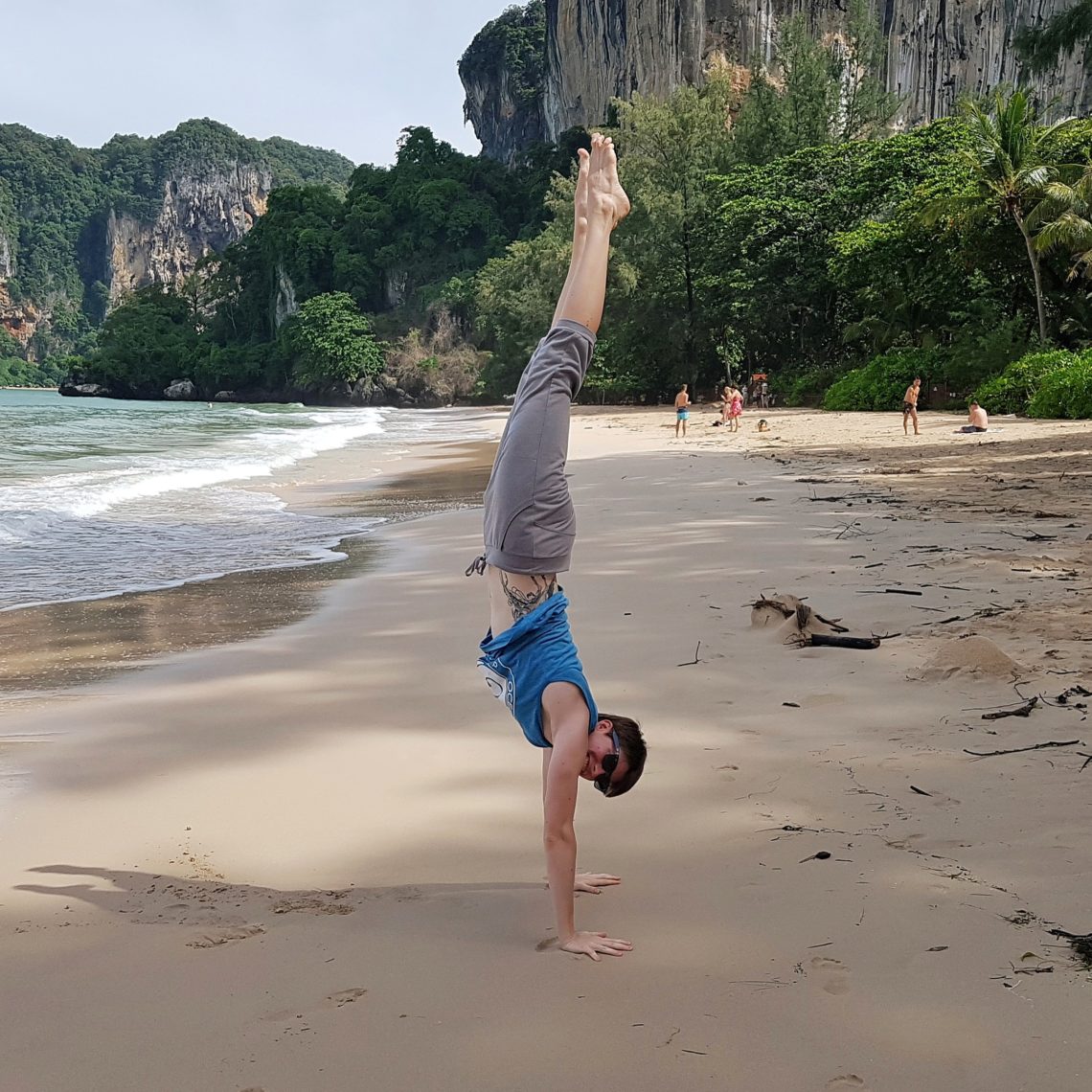
How To Keep Fit While Traveling Long Term
Is It Possible To Be Healthy When Traveling?
One of the downsides of being a full-time traveller is that it’s very easy to fall out of a healthy routine. Between long travel days , getting settled in a new AirBnB and sampling local treats, there are a lot of stumbling blocks on the path to maintaining a consistent approach to health and fitness.
Fortunately for us, health and fitness is one of our top priorities, whether traveling or staying in place. So we’ve gone to great lengths to design a lifestyle that enables us to not only travel full-time but also exercise six times a week and eat healthy every single day. We strongly feel that this balance between travel and health can be achieved by anyone, and we have a few tips to help jumpstart a healthy lifestyle on the road.
To set the context, staying fit and healthy has been a lifelong pursuit for us. Prior to leaving our corporate careers and heading off to travel, we had been doing CrossFit for over seven years. In fact, Gillian loved it so much she became a Level 1 CrossFit trainer. In addition to all our exercise, we followed a very healthy diet with lots of protein, vegetables and healthy fats.
During our most stressful times at work leading up to our early retirement, we used our focus on health and fitness as a tool to keep us energised and motivated.
Some people respond to work stress with overindulging on junk food, alcohol, television or other guilty pleasures; we responded with a disciplined lifestyle that emphasised fitness and healthy eating. The bonus was that we were also getting stronger and fitter in the process.
Of course, it’s important to note that all of our healthy practices were built up over many years, which brings us to the first key takeaway…
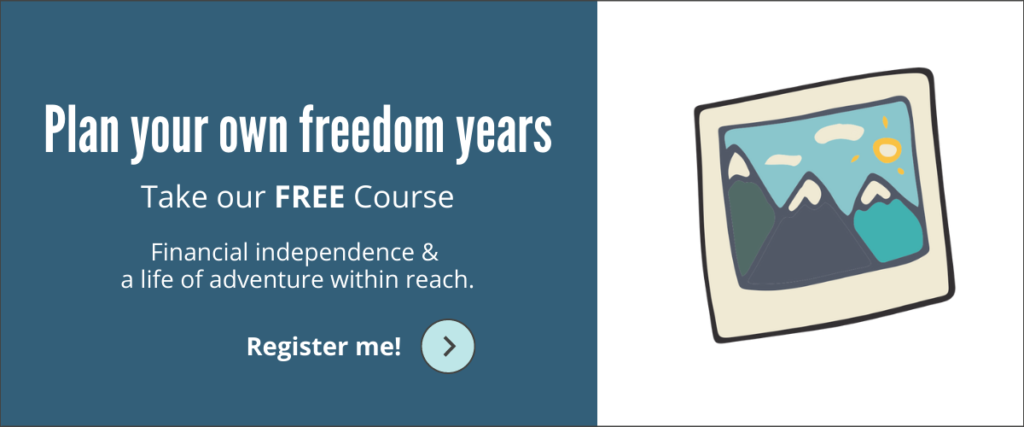
Healthy habits
We have found that having a solid foundation of good habits is critical for maintaining health. We spent many years developing these habits and then carried them with us into our long term travels. We believe that anyone can figure out which healthy habits are right for them and start incorporating them in small ways to eventually build a healthy lifestyle.
For travelers specifically, we find that slow travel is more helpful for enabling healthy habits versus fast travel. If you’re staying a month in one place like we do, that gives time to maintain routines like working out regularly or cooking healthy meals.
For us, habits take the decision making out of the activity.
So we don’t waste time debating whether or not to go to the gym; we just go because it’s part of the everyday routine.
If you’re looking to create a new habit, like working out regularly, it’s important to start small. When we first started going to Crossfit, we only went two to three times a week. It took many years to build up to going to the gym six days a week.
Sleep
We take sleep very seriously as we function better with a full night’s sleep, which for us is at least 8 hours. For you, the optimal night’s sleep could be more or less.
When we were still working corporate jobs, we had a very disciplined routine. We were in bed by 8:30pm to wind down, ideally asleep by 9pm and then up at 4:45am to meditate and be at the gym by 6am. This was a very challenging schedule but it enabled us to both get to the gym everyday and be at our desks by 8:30am.
Now that we are traveling full time, we have a much more relaxed sleep schedule although we’re still in bed by 9pm and up by 6am. This means we don’t have much of a night life but this is the right schedule for our priorities.
Of course, bedtime is a very personal choice for people. The key takeaway is that it’s important to get a full night’s rest for optimal mental and physical performance the next day.
Diet
Our everyday diet has remained consistent while we are on the road. Although we definitely love trying local foods, we make most of our meals at home with a focus on protein, vegetables and healthy fats.
We avoid eating processed foods and refined sugar and don’t keep those items in the house. Our only treats at home are popcorn and dark chocolate. We do enjoy trying local desserts — of course you have to have gelato in Italy — but try to restrict that to once or twice a week. Basically we remove temptation to have unhealthy snacks by not keeping any snack foods around. If we want a special treat, we need to make an effort to get it.
Again we find that slow travel helps keep us healthy. Since we usually stay a month in a place, it is easier to get stocked with all the essentials for cooking. We always make sure there is a good grocery store or market within walking distance of our accommodation and we stock up within the first day of arriving. For more on how we approach slow travel, see this video that shares the lessons we learned from six months of non-stop travel.
One of the challenges of being a traveler is how to eat healthy on travel days. We always prepare food in advance versus buying convenience foods along the way. Basically we pack as much food as we think we’ll need for the entire travel day, which could include a couple meals and a snack depending on how long the day is. We travel with food containers, utensils and napkins, which makes our travel day picnics a lot easier.
We find that packing food for travel days is not just healthier, it’s also a lot less expensive versus buying at the train station or airport.
Active lifestyle
Part of being healthy is simply to be active and avoid spending the day sitting at a desk or on a couch. One of the benefits of being a traveler is that we are constantly exploring new destinations. Walking is very accessible for most people and an excellent way to stay active during long term travels. We choose to walk everywhere and hardly ever take transit. We also fit in longer hiking days where available. Beyond physical health, we find that an active lifestyle also improves your mental health and outlook.
Exercise
Sleep, diet and activity help us be healthy overall but it’s exercise that helps us to be fit and strong. When you’re a traveler, it is important to find a form of exercise both that you enjoy and can do while on the road. There are a few elements that can help you achieve your exercise goals more successfully:
- Commit to a schedule, including how many times a week and what time of day
- Establish a plan…what will your workout consist of? Choose a program that you will enjoy following.
- It helpful to also have an accountability partner…someone following the same program as you or a friend who can help cheer you on
We like to workout five to six days a week, which is a schedule that we built up to over many years. In places where we have access to a gym, we follow a weight lifting program; note that this particular program is only appropriate for experienced lifters. When we arrive in a new city, we always go for an orientation walk on the first day, which includes a few stops to check out local gyms. That way we get started on our fitness program within the first couple days of arrival. Most gyms offer monthly memberships, which fits our pace of travel.
In places where we don’t have access to a gym, we do a combination of outdoor activities along with following a YouTube bodyweight bootcamp program that doesn’t require any equipment and is accessible to people at any fitness level.
Feeling great
Now we want to share the one thing that keeps us motivated and on track with our healthy lifestyle: how great we feel every day. We get a huge amount of satisfaction from challenging ourselves with workouts that make us sweat. After our morning workout we can head into our day feeling that we got it started right.
Those are our best tips for maintaining health and fitness while traveling: build a foundation of healthy habits, get enough sleep, eat clean food, stay active and, of course, challenge yourself with a few workouts each week. And don’t forget to enjoy life along the way…being healthy makes everything feel better.
For more slow travel content, click here to subscribe to our YouTube channel.


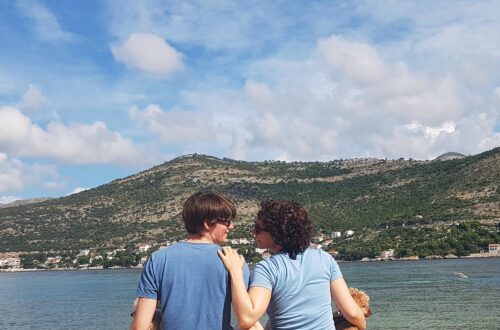
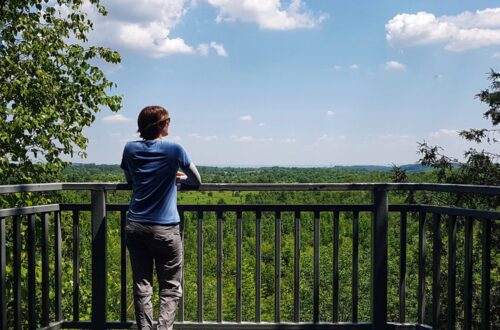
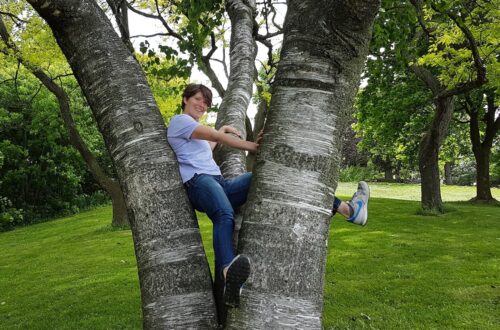
8 Comments
Pingback:
Pingback:
Pingback:
Pingback:
Pingback:
Pingback:
Pingback:
Pingback: